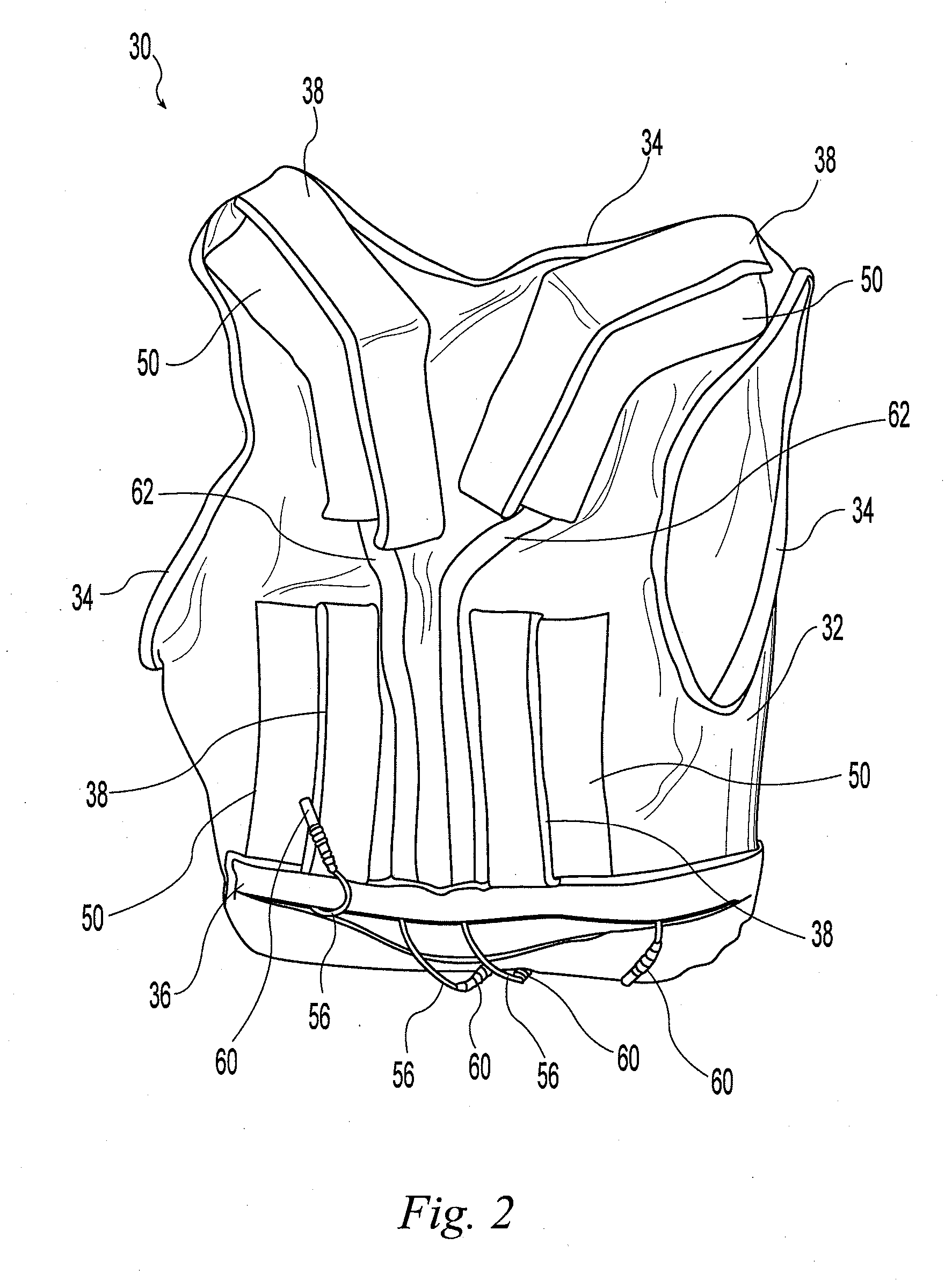System and device for neuromuscular stimulation
a neuromuscular and system technology, applied in the field of system and device for neuromuscular stimulation, can solve the problems of skin breakdown in the area on which the patient sits, poor pressure resistance, and insufficient protection of the pelvis underlying bone prominences
- Summary
- Abstract
- Description
- Claims
- Application Information
AI Technical Summary
Problems solved by technology
Method used
Image
Examples
Embodiment Construction
[0019] Exemplary embodiments of the present invention are now described with reference to the Figures. Reference numerals are used throughout the detailed description to refer to the various elements and structures. For purposes of explanation, numerous specific details are set forth in the detailed description to facilitate a thorough understanding of this invention. It should be understood, however, that the present invention might be practiced without these specific details. In other instances, well-known structures and devices are shown in block diagram form for purposes of simplifying the description.
[0020] The present invention relates to wearable neuromuscular stimulation and neuroprosthetic systems and devices for: (i) treating spinal cord injury, stroke, and other neurological conditions; and (ii) for the management of chronic pain. A first general embodiment of this invention provides a system for transcutaneous neuromuscular stimulation. An exemplary embodiment of this s...
PUM
 Login to View More
Login to View More Abstract
Description
Claims
Application Information
 Login to View More
Login to View More - R&D
- Intellectual Property
- Life Sciences
- Materials
- Tech Scout
- Unparalleled Data Quality
- Higher Quality Content
- 60% Fewer Hallucinations
Browse by: Latest US Patents, China's latest patents, Technical Efficacy Thesaurus, Application Domain, Technology Topic, Popular Technical Reports.
© 2025 PatSnap. All rights reserved.Legal|Privacy policy|Modern Slavery Act Transparency Statement|Sitemap|About US| Contact US: help@patsnap.com



